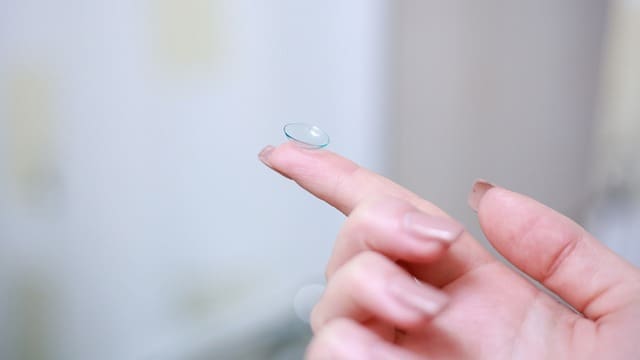Using contact lenses is a convenient and affordable way to correct vision. These products to help improve vision are thin lenses placed directly onto the eyes’ surface. They are used for both therapeutic and cosmetic purposes.
Disadvantages
Compared to rigid gas permeable lenses, soft ones have several advantages. But there are also some disadvantages. For example, they are not as good at masking irregular astigmatism as hard lenses. Also, they tend to be more expensive and require more frequent replacements. They may be difficult to apply, remove and disinfect.
The advantages of soft ones are better oxygen permeability, ease of adaptation, and shorter adaptation time. The disadvantages include a greater risk of eye irritation and more allergic reactions. In addition, they can absorb chemicals from the environment. Soft lenses also absorb lipid deposits that can lead to blurred vision.
The best-corrected visual acuity achieved with gas-permeable ones has been found to be better than spectacles. In addition, their use of them has been shown to reduce the density of corneal basal epithelial cells.
Soft ones are also known to reduce the risk of corneal ulcers. However, this is not true for all patients. Patients who do not follow basic guidelines or do not wear them for a period of time may develop corneal ulcers.
Soft contact lenses’ main advantage is that they offer better comfort than a rigid gas permeable (RGP) lens. However, soft ones have some disadvantages, including increased eye irritation and allergic reactions. Also, they are more expensive and require daily cleaning and disinfection.
Soft contact lenses also have less oxygen permeability than rigid gas-permeable lenses. They are also less sensitive to light. However, they do not offer the same level of convenience. They are more expensive, require frequent replacement, and require daily disinfection. The material owes its softness to an intrinsic rubbery property.
Rigid gas permeable
In addition to improving vision, they also help keep your eyes healthy. They are custom-fit to your eye and allow more oxygen to reach the cornea. This means you are less likely to develop eye problems. They are also made to your specific prescription, so they can last longer. They are also less likely to tear than soft ones.
Gas-permeable ones can be a good choice for people with moderately dry eyes. However, they can be uncomfortable for some people and cause debris to build up under the lens.
Those with irregular corneas or post-surgical abnormalities can also benefit from the clarity of RGP ones. They can also be tinted to help compensate for color blindness.
Although they are more comfortable than soft contact lenses, gas-permeable ones require a bit of time to get used to. This can include a week or so of getting used to them before they are comfortable. It is also important to remember to clean them before going to sleep at night. This is because debris can build up under the lens, and you don’t want to end up with a dirty, unsightly lens.
Hybrid
Designed to provide clear and comfortable vision, hybrid contact lenses offer the best of both worlds. Featuring a hard center for precise prescriptions and a soft skirt for stability, they are made from a material that can be easily cleaned.
The hybrid contact is available in single-vision and multifocal designs. Their patented technology prevents them from coming apart after being cut. It also enables the lens to be cleaned and disinfected using the same cleaning solutions as soft contacts, which is helpful as that’s the primary solution on the market for use in the eyes.
Hybrid ones are useful for patients with corneal irregularities, corneal disease, and presbyopia. They are also beneficial to patients who have poor vision due to epithelial basement membrane dystrophy or post-LASIK surgery which has been shown to not be very good.
While it’s true that hybrid contacts are a great way to increase your patient’s comfort, they’re not for everyone. They can be irritating, and they can cause poor vision. They’re also not designed to last long. They may not offer many benefits, and it’s best to refer patients to a specialist if they are unsure about using them.

Multifocal
Whether you are just starting to lose your near vision or you are experiencing presbyopia, multifocal contacts may be able to help you. They are made to correct refractive errors in different fields of vision, such as near, intermediate, and distance.
Multifocal contacts are a convenient alternative to bifocal eyeglasses. Many people choose products like these color contact lenses – Misaki Colored Contacts because they are comfortable and convenient to wear. There are several varieties of multifocal contacts, including soft and rigid gas permeable (GP) seeing devices. If you are interested in multifocal ones, ask your eye doctor about them.
For example, some provide better distance vision than near vision. Other ones have a gradual change in lens power, allowing you to naturally move from near-to-distance vision. Some multifocal contacts have a bifocal design, which divides the lens into two zones, one for distance vision and the other for near vision.
Multifocal contacts are great for people who do a lot of outdoor activities and need flexibility in their vision. You may also be a good candidate for multifocal lenses if you are a mechanic, an electrician, or do computer work.
Featured Photo by Betül on Unsplash




